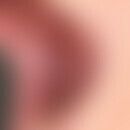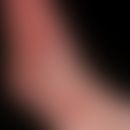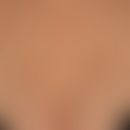Synonym(s)
DefinitionThis section has been translated automatically.
Strongly potent halogenated glucocorticoid (class IV), mostly used in the form of clobetasol-17-propionate. The optimum stability of clobetasol-17-propionate is pH 4-6. At higher pH values, hydrolysis of the ester occurs. Therefore, a citrate buffer should be added to all formulations, consisting of equal amounts of a 0.5% citric acid solution and a 0.5% sodium citrate solution and having a pH of 4.2. On the total formulation, the citrate buffer is used at 5%. The addition of salicylic acid or urea in clobetasol-17-propionate preparations is controversial.
IndicationThis section has been translated automatically.
You might also be interested in
Dosage and method of useThis section has been translated automatically.
Notice!
Application duration max. 2-3 weeks!Standard concentrationThis section has been translated automatically.
Undesirable effectsThis section has been translated automatically.
Allergic side effects to clobetasol-17-propionate are very rare. DKG has tested clobetasol-17-propionate 0.25% in vaseline so far. This form of application is no longer available as a test substance in Germany. In this respect, a 1% concentration of clobetasol-17-propionate in vaseline is now recommended (as of 2016).
Skin atrophy may occur, especially with prolonged, uncontrolled application. With prolonged application to large areas, the active ingredient can be absorbed through the skin and become systemically active. In order to avoid consequences such as a Cushing's syndrome and disturbances of the hormone balance, the treatment should be narrowly limited in time.
ContraindicationThis section has been translated automatically.
Recipe(s)This section has been translated automatically.
- R229; R054; R054a
- 0.05% Clobetasol urea lotion
- clobetasol-17-propionate 0,05
- Hydrophilic urea emulsion 5% (NRF 11.72) ad 100,0
- S: 0,05% Clobetasol-urea lotion; use-up period 6 months. Shake mix bottle with hinged lid.
- 0.05% Clobetasol lotion
- clobetasol-17-propionate 0,05
- Sol. acid. citric. 0.5% 2.5
- Sol natr. citric. 0.5% 2.5
- Ung. emulsific. aquos. 29,0
- Potassium sorbicum 1,0
- Aqua purific. ad 100,0
- S: 0.05% Clobetasol lotion; use-by period 6 months. Shake-mixture bottle with hinged closure.
PreparationsThis section has been translated automatically.
Note(s)This section has been translated automatically.
LiteratureThis section has been translated automatically.
- Geier J et al (2016) News on the epicutaneous test series of the German Contact Allergy Group. Dermatology at work and in the environment 64: 70-75
- Wolf G (2011) Changes to a vehicle system. Dermatologist 62: 410-411




